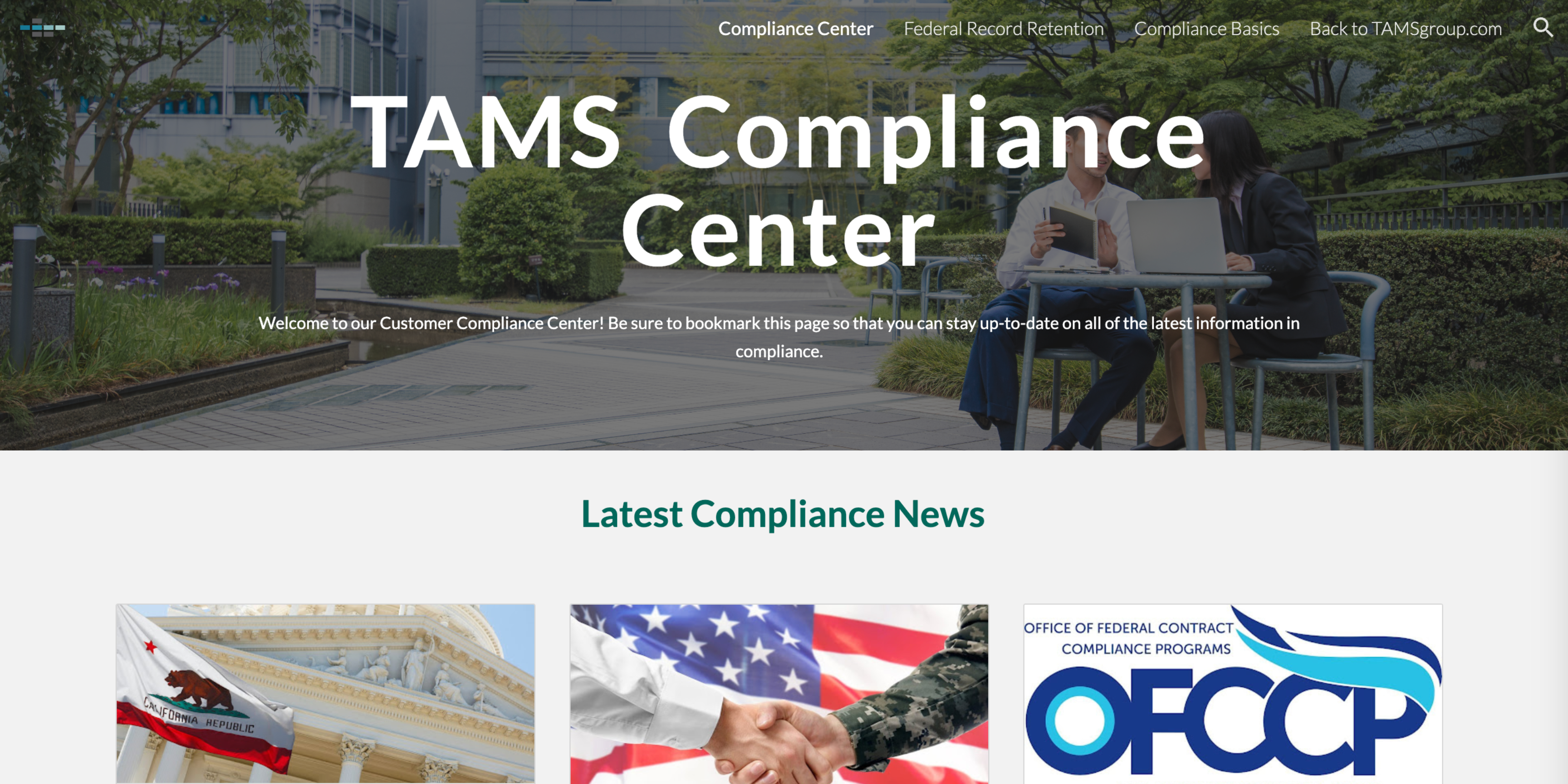While some changes to the AAP for Women & Minorities are clear in President Trump's Executive Order,...

Stay up-to-date on the latest industry news & trends through our TAMS Group Blog, designed to help your team provide practical human resource solutions that improve employee and organizational productivity.

While some changes to the AAP for Women & Minorities are clear in President Trump's Executive Order,...
.png)
The Equal Employment Opportunity Commission (EEOC) opened the 2022 EEO-1 Component 1 Report filing s...
.png)
EEOC will open Component 1 filing in mid-July 2023 while OFCCP holds steady on its June 29th deadlin...

At TAMS Group, we’re committed to providing our clients with the resources they need to stay complia...

At TAMS Group, we’re dedicated to providing our clients with the resources they need to succeed in t...

California Pay Data Reporting Due May 10, 2023.

Have you clearly defined and communicated the roles that employees need to play?

I’ve noticed that as we work with various businesses to improve their performance, there is a common...

Employee Engagement: I’ll argue that it’s the most overused term in human resources. And like any ph...

Early in my career I was interviewing for an HR management role with a fast growing technology compa...